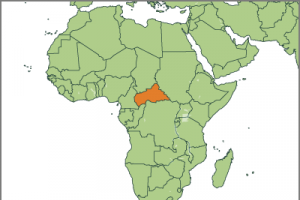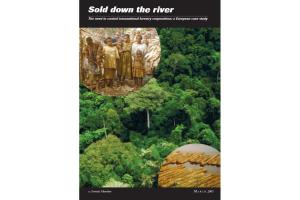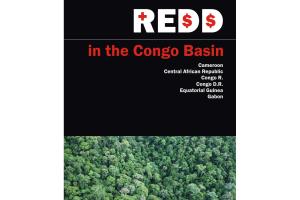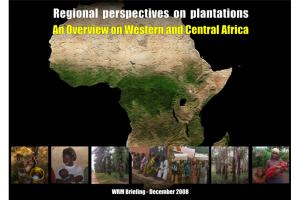Central African Republic
Other information
17 April 2011
Sold Down the River - The Need to Control Transnational Forestry Corporations: A European Case Study
By Forests Monitor, 2001
Sold Down the River - The Need to Control Transnational Forestry Corporations: A European Case Study
Publications
11 December 2010
The forest of the Congo Basin expands over an area of continuous tropical rainforest cover only second to that of the Amazon forest. Those forests are currently receiving a lot of attention within the Climate Change negotiations.
Bulletin articles
30 August 2010
Last April, the Central African Republic ratified ILO's Convention on Indigenous and Tribal Peoples thus becoming the first African country to ratify this convention.
Publications
15 December 2008
Oil palm and rubber plantations occupy extensive areas in many countries in tropical Africa. In spite of their social and environmental impacts, until now they have received scant attention both at the national and international level.
Bulletin articles
18 July 2007
Indigenous peoples living in the tropical rainforests of Central Africa are widely dispersed and identify their groups by a variety of names. Numbering a total of 300,000 to 500,000 people, those members of communities from several ethnic groups characterized by their small stature are identified under the generic name of “pygmies” (see WRM Bulletin Nº 119).
Bulletin articles
14 June 2002
The rainforests of the Central African Republic’s Dzanga Sangha national park are inhabited by the Ba’Aka indigenous people, which counts with some 20,000 members. Like many other so-called “Pygmy” groups of neighbouring countries, they have been hunter-gatherers living in the heart of the forest and have developed a whole body of knowledge on the local rainforest resources.
Bulletin articles
14 May 2002
Six Central African countries --Equatorial Guinea, Gabon, Congo Republic, the Democratic Republic of Congo (former Zaire), Cameroon and the Central African Republic-- share the rainforest ecosystem of the Congo Basin, which is home to one of the world’s largest contiguous blocks of tropical rainforest, only second to that of the Amazon Basin in South America in terms of not fragmented forest areas.
Bulletin articles
21 January 2002
The dense, moist forests of the Central African Republic cover about four million hectares. Although the country has maintained loan arrangements with the IMF dating back to the 1980’s, it came under increased pressure when the Central African Republic signed a three-year, $66 million loan agreement with the IMF in 1998. The IMF has encouraged the Central African Republic to increase exploitation of forest and mineral resources.
Bulletin articles
12 July 2001
Compared to other countries in the Congo region, the Central African Republic (CAR) has a relatively small area of forest --around five million hectares-- corresponding to 8% of the country's territory. Yet in terms of commercially valuable species such as Sapelli (Entandrophragma cylindricum), Ayous (Triplochiton scleroxylon) and Sipo (Entandrophragma utile), its forests are some of the richest in Africa.
Bulletin articles
13 December 2000
The first conference of Central African forestry ministers took place in Yaoundé from 4-7 December, within the framework of the follow-up of the implementation of the decisions of the Heads of States Summit held in Yaoundé in March 1999. The ministerial meeting had been preceded in September by a meeting of experts from the forestry departments of the Central African countries. The aims of the organizers of the event --as could be perceived clearly from the agenda-- were the following:
Bulletin articles
27 November 1998
By means of a letter dated October 22 a group of environmental NGOs addressed Mr Henri Djombo, Minister of Forest Economy of the Republic of Congo, to express their disapproval regarding a number of actions carried out by him, believed to be aimed at undermining the Brazzaville Process.




